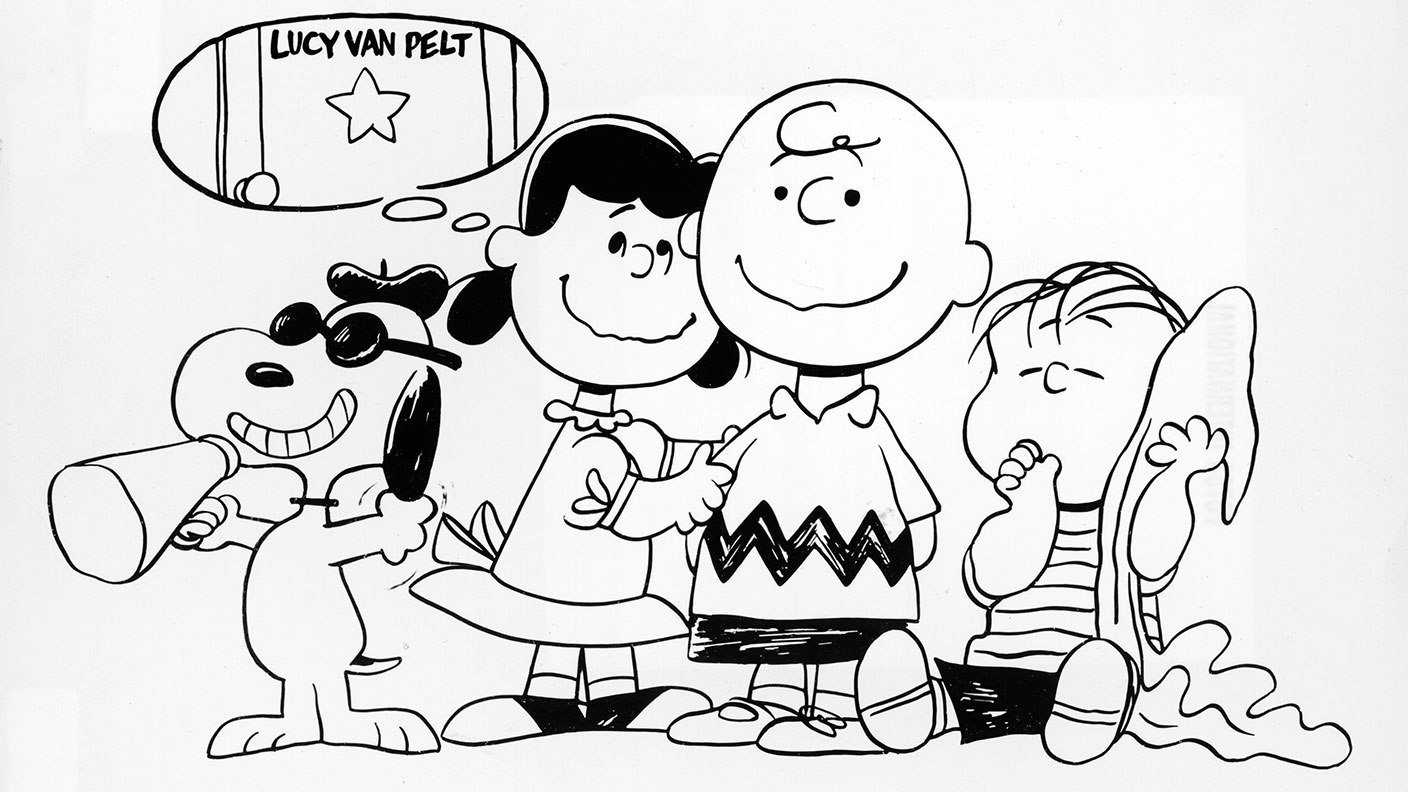2 October 1950: Peanuts comic strip appears
On this day in 1950, Peanuts featuring Charlie Brown and Snoopy debuted in nine US newspapers. The cartoon would net creator Charles Schulz a fortune.


America has always had a strong regional and local press. At the peak of the newspaper industry in the early 1950s there were nearly 1,800 separate papers. To avoid wasteful duplication, and ensure that readers got national news, publishers would buy columns, features and even comics from agencies (the first agency was founded in 1865). This meant that successful writers and artists could make a lot of money if their work was used in papers across America.
Syndication could make people rich witness the cartoonist Charles Schulz. While working for a correspondence school that taught drawing, Schulz had some minor success with a local newspaper with the cartoon series Li'l Folks.
Unhappy with the amount of money they were paying him, he tried to have the series syndicated. However, the agency United Feature Syndicate was more interested in a slightly modified version that they named Peanuts, to avoid confusion with a popular cartoon strip called Li'l Abner. Peanuts debuted on2 October 1950 in nine newspapers.
MoneyWeek
Subscribe to MoneyWeek today and get your first six magazine issues absolutely FREE

Sign up to Money Morning
Don't miss the latest investment and personal finances news, market analysis, plus money-saving tips with our free twice-daily newsletter
Don't miss the latest investment and personal finances news, market analysis, plus money-saving tips with our free twice-daily newsletter
Peanuts would run nearly continuously for 49 years, with the final original strip running the day after Schulz's death in February 2000. By then it was appearing in 2,600 papers in 75 countries.
While Schulz's royalties from the first nine customers would be only $90 a week ($1,230 in today's money), by 1953 he was earning $30,000 a year ($358,000). In the last ten years of his career he was receiving $30m-$40m annually from all sources, including merchandising, books, TV specials and endorsements.
Get the latest financial news, insights and expert analysis from our award-winning MoneyWeek team, to help you understand what really matters when it comes to your finances.

-
 ‘Why I have ditched my Help to Buy ISA for cash savings and the stock market’
‘Why I have ditched my Help to Buy ISA for cash savings and the stock market’Without the 25% bonus, my Help to Buy ISA is effectively redundant, says MoneyWeek writer Sam Walker.
-
 Is your inheritance tax allowance cut if you sell to downsize or sell your home to pay for care?
Is your inheritance tax allowance cut if you sell to downsize or sell your home to pay for care?Downsizing relief is a little-known benefit that could save your loved ones tens of thousands of pounds in inheritance tax after you’ve died.
-
 31 August 1957: the Federation of Malaya declares independence from the UK
31 August 1957: the Federation of Malaya declares independence from the UKFeatures On this day in 1957, after ten years of preparation, the Federation of Malaya became an independent nation.
-
 13 April 1960: the first satellite navigation system is launched
13 April 1960: the first satellite navigation system is launchedFeatures On this day in 1960, Nasa sent the Transit 1B satellite into orbit to provide positioning for the US Navy’s fleet of Polaris ballistic missile submarines.
-
 9 April 1838: National Gallery opens in Trafalgar Square
9 April 1838: National Gallery opens in Trafalgar SquareFeatures On this day in 1838, William Wilkins’ new National Gallery building in Trafalgar Square opened to the public.
-
3 March 1962: British Antarctic Territory is created
Features On this day in 1962, Britain formed the British Antarctic Territory administered from the Falkland Islands.
-
10 March 2000: the dotcom bubble peaks
Features Tech mania fanned by the dawning of the internet age inflated the dotcom bubble to maximum extent, on this day in 2000.
-
9 March 1776: Adam Smith publishes 'The Wealth of Nations'
Features On this day in 1776, Adam Smith, the “father of modern economics”, published his hugely influential book The Wealth of Nations.
-
 8 March 1817: the New York Stock Exchange is formed
8 March 1817: the New York Stock Exchange is formedFeatures On this day in 1817, a group of brokers moved out of a New York coffee house to form what would become the biggest stock exchange in the world.
-
7 March 1969: Queen Elizabeth II officially opens the Victoria Line
Features On this day in 1969, Queen Elizabeth II took only her second trip on the tube to officially open the underground’s newest line – the Victoria Line.